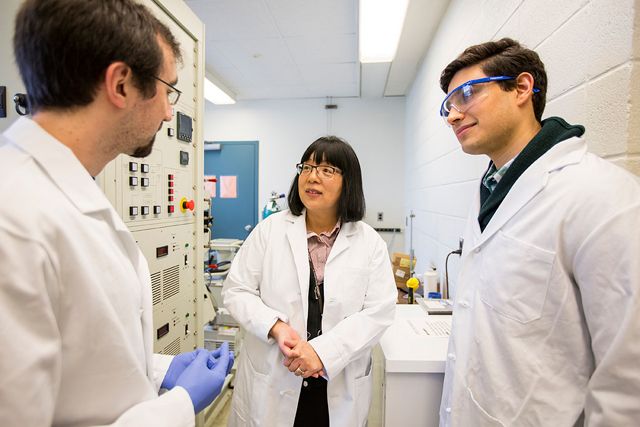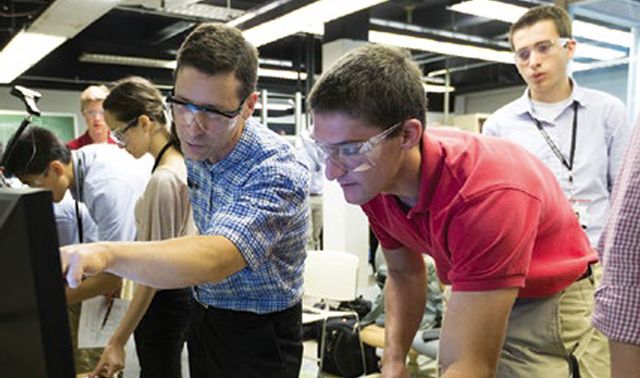Professors Helen Chan and Richard Vinci are interested in the mechanical behavior of inorganic composites. Their recently awarded NSF grant, entitled Mechanical Behavior of Novel Metal-Oxide Composites with Hierarchical Microstructures: Effect of Scale and Interfacial Structure, will provide funds to fuel their research.
Often, a material with nanometer-sized internal features has remarkable properties, such as high strength, when compared to the same material at a larger scale. However, it can be difficult to create such materials with these nanometer-scale features at an affordable cost and in large quantities. This research project is focused on a new route for creating materials with nanometer-scale layers of ceramics and metals that have the potential to possess unusual and advantageous mechanical properties and to be processed at a reasonable cost.
Specifically, this research project is focused on understanding the microstructure development and mechanical behavior of ceramic-metal composites derived from the partial reduction of mixed oxide ceramics that have a delafossite starting structure. The microstructural scale of the ceramic/metal features range from tens of nanometers to tens of microns, and both layered and globular morphologies can be achieved. The discovery of unique microstructures combined with the relatively recent advent of aberration-corrected scanning transmission electron microscopes and in situ micro-mechanical testing instruments, make it possible for the first time to reveal the effects of ceramic-metal composite microstructures and nanostructures on stiffness, hardness, and toughness. The findings of the study are relevant to technological processes such as joining, and to understanding scaling effects in ceramic-metal systems.


